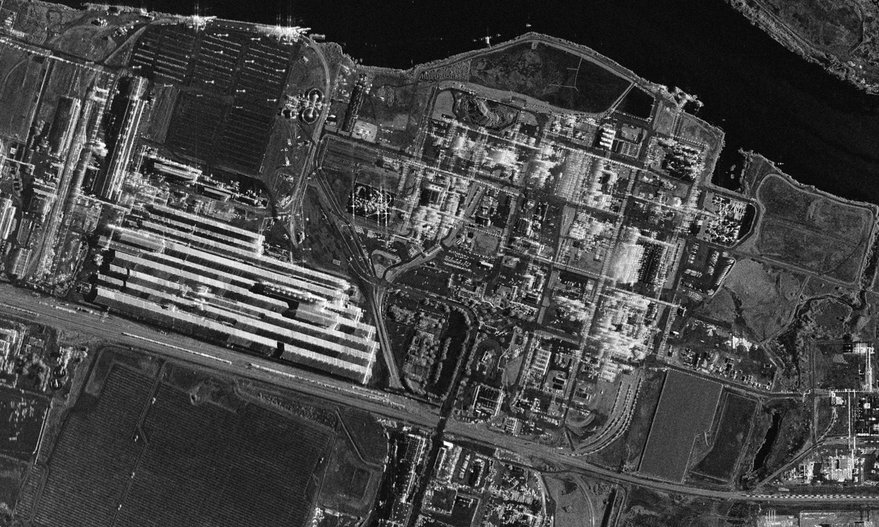NRO’s Pete Muend: ‘One of the things that we are moving out on is the potential to purchase commercial radar imagery’
WASHINGTON — The National Reconnaissance Office plans to sign new deals with commercial providers of satellite radar imagery as the agency looks to better understand the capabilities of the private sector, a senior NRO official told SpaceNews.
Satellite imagery known as synthetic aperture radar (SAR) is now offered by a growing number of commercial companies, a trend that has drawn the attention of U.S. national security agencies.
“One of the things that we are moving out on is the potential to purchase commercial radar imagery,” said Pete Muend, director of the NRO’s Commercial Systems Program Office.
The NRO in December 2019 awarded SAR imagery provider Capella Space a contract to experiment with the use of the company’s data and figure out the utility of the data for national security. Other providers of satellite-based Earth intelligence received similar study contracts over the past two years. Muend said the next round of contracts will focus on SAR imagery.
“I’m very excited about the commercial radar side,” said Muend. He said the NRO in November 2020 issued a request for information to “really get a better understanding of where U.S. domestic commercial radar providers might be.”
There was a significant response from the industry, said Muend. “We got a lot of really good feedback from that and we’re in the process of awarding a number of study contracts.”
The NRO acquires satellite data for the U.S. intelligence community, the military and homeland security agencies. It buys primarily optical satellite imagery, or photographs taken from space. The dominant supplier of electro-optical commercial imagery is Maxar Technologies. In 2019 the NRO launched an industry competition as it looks to select new suppliers of electro-optical imagery. It awarded study contracts to Maxar, Planet and BlackSky.
“We are trying to do something on the SAR side very similar to what we did on the electro-optical side,” Muend said.
Under a study contract, the company provides a “fair amount of imagery” so the government can assess the quality and performance, he said. The data will be analyzed by the National Geospatial Intelligence Agency, which is responsible for defining the requirements for the imagery the NRO procures.
“We’re working hand in hand with NGA to lay the foundation for a future set of validated requirements so we can ultimately have a competition to purchase that radar imagery at scale for the long term,” Muend said.
The SAR study contracts are expected to be awarded in mid to late 2021.
One of the benefits of SAR is that it sees through clouds and other atmospheric obstacles that interfere with optical satellites. SAR imagery, however, requires a different type of skill and training to analyze. The commercial SAR constellations now being built project to have many satellites in orbit that can capture images of areas on Earth multiple times a day. Companies offer their services to civilian industries like agriculture and energy, but they view defense and intelligence as their most important market.
Electro-optical imagery contracts
As it evaluates SAR imagery bids, the NRO also plans to seek proposals for its next round of electro-optical imagery contracts, Muend said.
The NRO currently spends about $300 million a year on imagery provided by Maxar under a sole-source contract known as EnhancedView.
EnhancedView was extended until 2023. The study contracts awarded to Maxar ,Planet and BlackSky were intended to help the NRO figure out a plan for the next contract after EnhancedView.
“Obviously that is all leading to a competition for us to put in place the next generation of electro optical commercial imagery contracts,” Muend said. “We’re working as rapidly as we can down that path.”
The next step will be the release of a draft request for proposals this summer or fall and a contract award later in the year, he said.
Muend said a key hurdle that has to be cleared before contracts are awarded are licensing agreements.
“The imagery that we purchase is restricted under an end user license agreement that dictates who we can give it to, and who we can’t,” he said. “And it’s very important to make sure we have a good understanding on both sides of dissemination audiences” as that dictates the pricing of the imagery.
The NRO developed a family of end user license agreements that would be part of any imagery contracts. “We wanted to get away from individually negotiated end user license agreements,” he said. “That can be quite complicated. So we wanted something that was standard, relatively simple.”
The NRO and the NGA want to create a ‘license architecture” so when agencies order imagery they know they have rights to disseminate it to their audiences, said Muend. “That’s definitely folded into our contract moving forward.”
